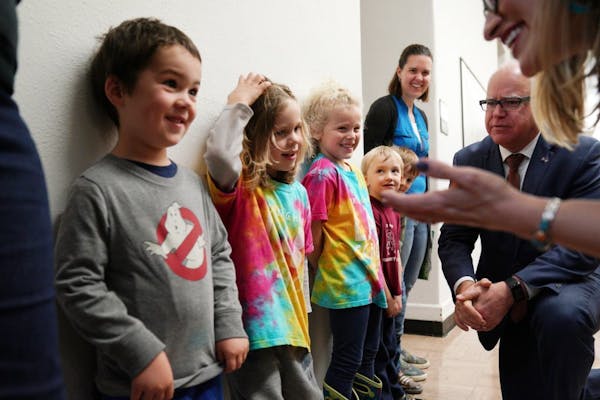Hoping for repairs to the Chisholm ice arena and curling club? Want $4 million for a riverfront trail in Brainerd? Perhaps you would like to jump-start efforts to add a second train from the Twin Cities to Chicago?
Gov. Tim Walz is asking people to tell him why their local sewer system, county highway or other public works project deserves a chunk of cash in next year's state borrowing bill. Taking an idea from his time in Congress, Walz has created a website for people to submit comments for or against specific projects by Nov. 30. He plans to use the responses to help winnow down the list of more than 200 local government requests.
It's one piece of the governor's effort to get more public input in the process. He is also traveling the state over the next two months to explore aging facilities and buildings as he prepares to push for a large public works and infrastructure package known as the bonding bill.
"Not all of them will make it. Not all of them will be done this year. But it gives us a better, more thorough, predictable way to deal with bonding," Walz said.
But for communities like Ellsworth, population 467 in the southwest corner of the state, the use of online comments to help guide decisionmaking is cause for some consternation. The town is seeking $1.3 million to build a multipurpose room. It would house community gatherings, from weddings to class reunions, after their old space burned down in January, City Council Member Paul Snyder said. He had no idea the website to comment on local requests existed.
Snyder said a community of Ellsworth's size has limited resources to rebuild, and they also don't have many people who could advocate for the project online. Towns like Ellsworth often have more older residents who don't use the internet, he said, and the state's consideration "should be balanced, because we're not going to have as many comments from a small community."
The number of comments for a certain project is not the deciding factor, Minnesota Management and Budget Commissioner Myron Frans said. One thoughtful submission from a small community will be given as much weight as a bunch of posts from a large town "that don't have any meat to them," he said. The website is available here.
"We don't want people flooding the website just to, sort of, vote," Frans said. Instead, he said the administration is after a better understanding from people on the ground about why a project is important and needs to be done now.
Since it is the first year the website is being used in Minnesota, communities will be asking: "How much is this used as a barometer for what goes into the governor's plan?" said Matt Hilgart with the Association of Minnesota Counties.
However, Hilgart said people are excited about the other change to the bonding process — that Walz and Lt. Gov. Peggy Flanagan are visiting so many sites. He has heard from multiple municipalities that want Walz to check out their bonding needs.
"It's great to see that he is looking at more ways to engage the public and solicit feedback," said Audrey Nelsen, a Willmar City Council member and president of the Coalition of Greater Minnesota Cities. However, she said some communities are better at campaigning than others and "hopefully there will be a secondary process for checks and balances within how they are prioritizing."
There is a large pent-up demand for infrastructure assistance, Nelsen said. The Legislature typically passes bonding bills in even years, though it has become common practice for lawmakers to also pass smaller borrowing plans in odd years. In the 2019 session, Walz suggested a $1.3 billion public infrastructure package and said Minnesota should take advantage of low interest rates. Lawmakers did not end up passing a broad borrowing bill last year.
Whatever makes Walz's bonding project list for 2020 is not guaranteed to get state aid, as his proposal must be reconciled with what the House and Senate want.
Staff writer Torey Van Oot contributed to this report. Jessie Van Berkel • 651-925-5044

